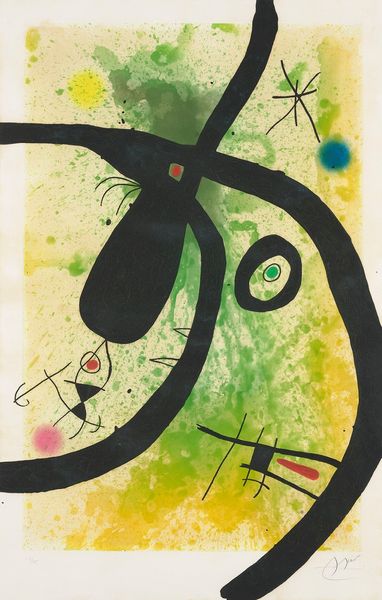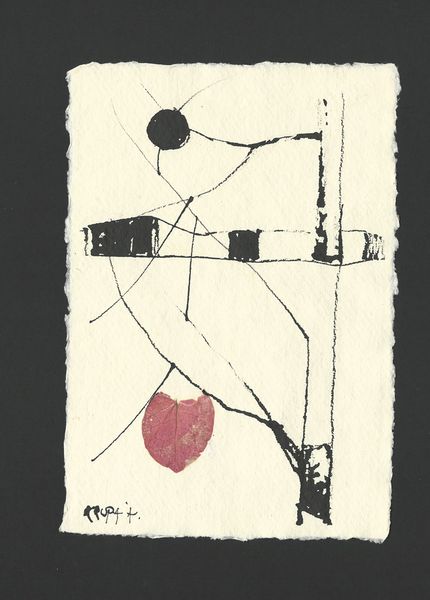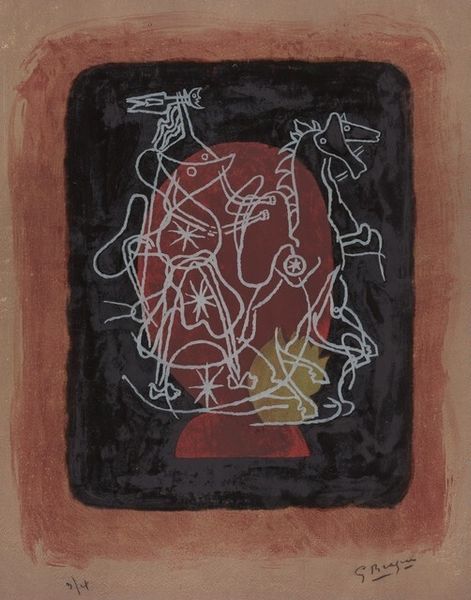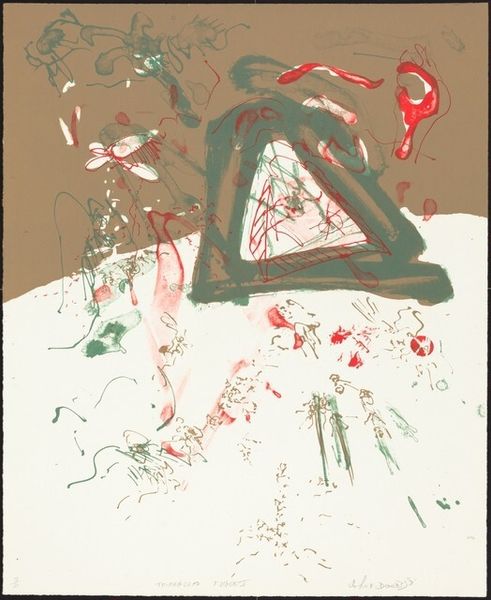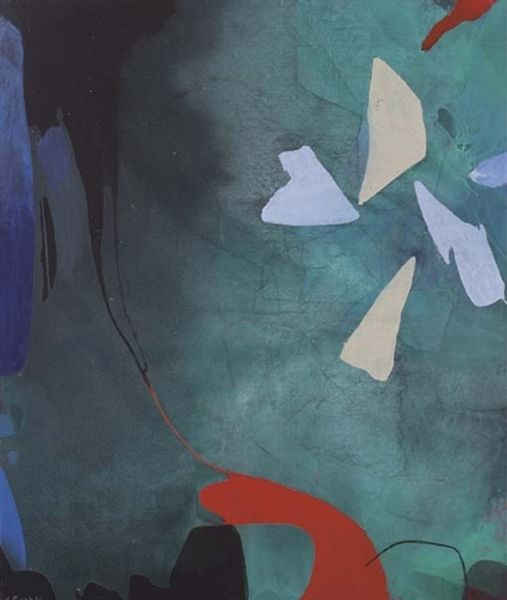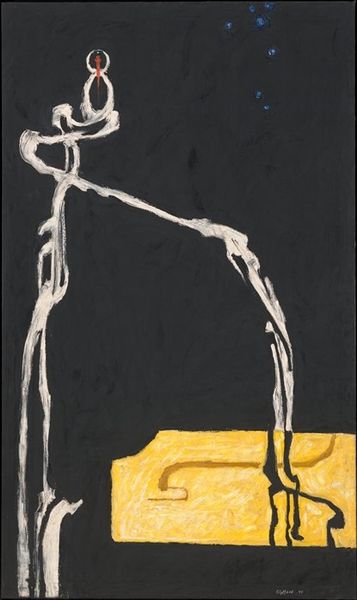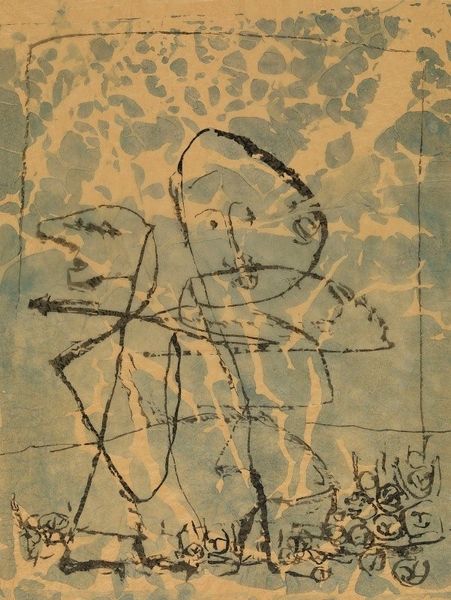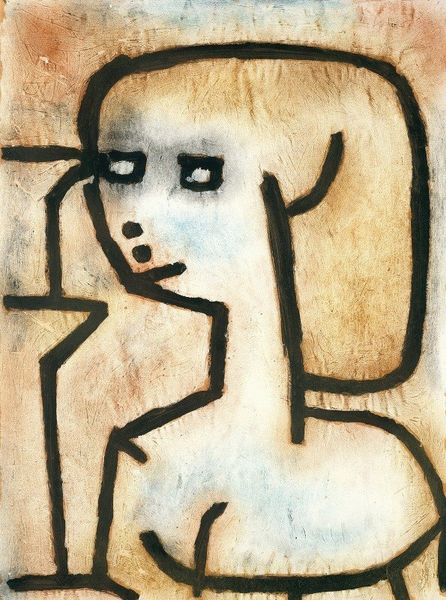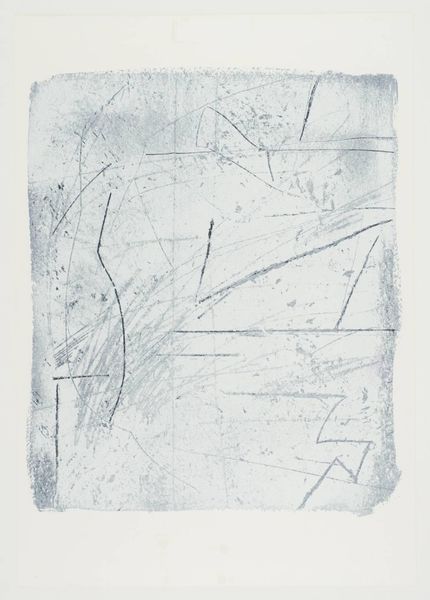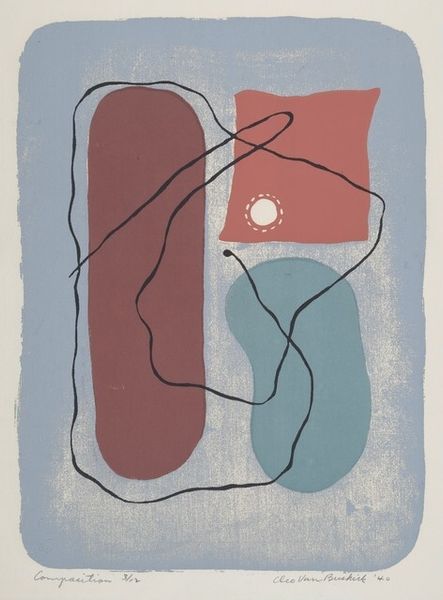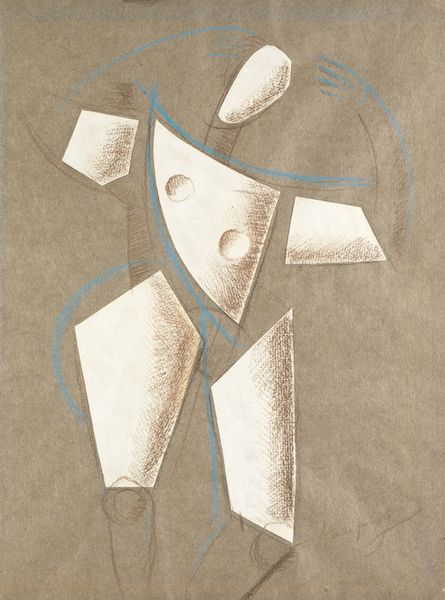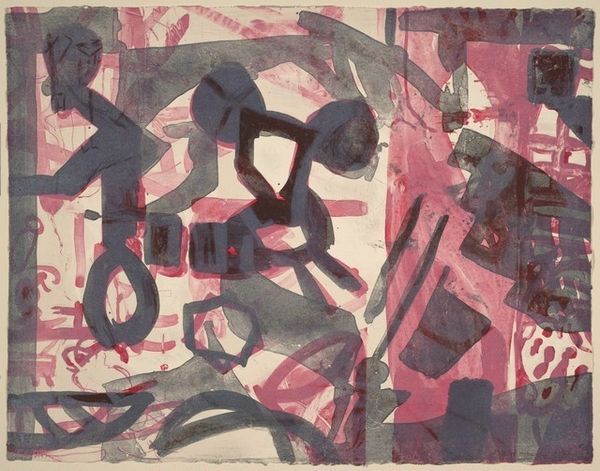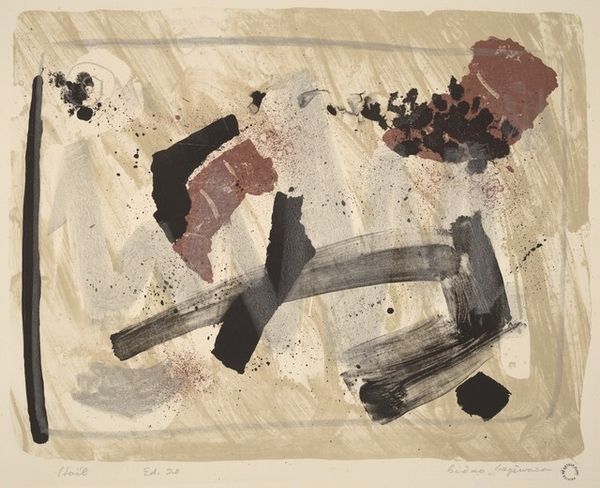
drawing, mixed-media, paper, ink
#
abstract-expressionism
#
drawing
#
mixed-media
#
paper
#
form
#
ink
#
coloured pencil
#
geometric
#
abstraction
#
line
#
modernism
Dimensions: overall: 39.6 x 28.6 cm (15 9/16 x 11 1/4 in.)
Copyright: National Gallery of Art: CC0 1.0
Curator: Imre Reiner's mixed-media drawing, "Zwischen den Klippen," dating back to 1963, immediately strikes me with its complex layering. The texture alone hints at the abstract expressionist movement, although that geometric element hints at modernism too. Editor: My initial reaction? Disquieting. Those earth-toned rectangular shapes feel incredibly weighty, and then you've got those almost frantic lines sketched over this strangely serene pale blue backdrop. I'm immediately put in mind of boundaries—of constraints both physical and psychic. Curator: It’s interesting you say that. Reiner, originally from what is now Slovakia, but Swiss by choice, worked across movements, which likely came about during the post-war cultural shifts across Europe. The title, meaning "Between the Cliffs," emphasizes that sense of constraint and perhaps feeling closed in by outside elements. Editor: Yes! And seeing this as 'cliffs,' I think it amplifies the human struggle—the smallness and vulnerability, to say nothing of potential societal divides during a very turbulent historical moment. Those black lines read as desperate grasping to me, almost violent strokes in comparison to the softer geometry. Curator: The interplay of media—the stark ink lines versus the subtle color washes of what seems like colored pencil—creates a push-and-pull that reinforces this idea. As a drawing on paper, it's seemingly intimate, and the texture really gives off a rugged and earthy feel that might seem to suggest endurance. Editor: I’d agree with that, but to push back on it: this feels like it also questions permanence, like maybe those cliffs could give way, which lends an almost existential dread to the piece. Maybe this wasn’t the most obvious theme back then, but with climate change being something a lot more contemporary minds contend with, the idea of permanence in physical spaces might feel a lot less safe today. Curator: It's a compelling work because it's not easily resolved. You get this interplay of form and formlessness which lends an almost disquieting sense of freedom and constriction. The title might invite personal and sociopolitical readings on individual or national-level isolation. Editor: Definitely. It reflects broader historical anxiety—and maybe even contemporary feelings of precarity and societal breakdown, too. Hopefully people come away with that as they grapple with Reiner's artwork.
Comments
No comments
Be the first to comment and join the conversation on the ultimate creative platform.
